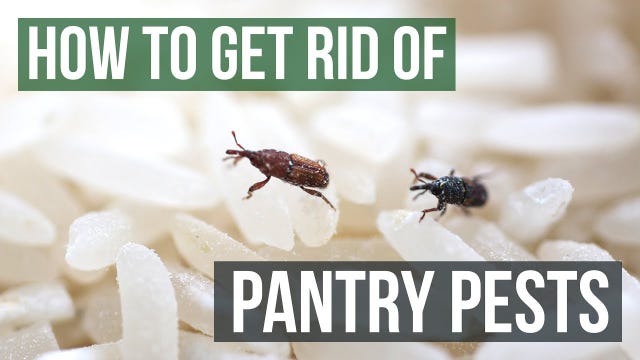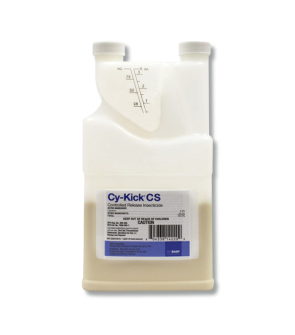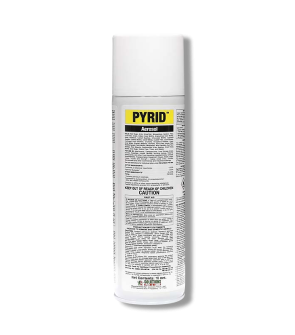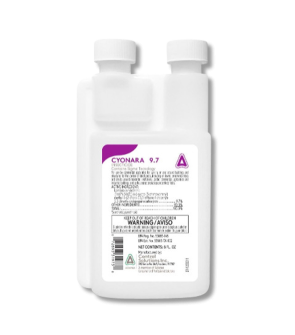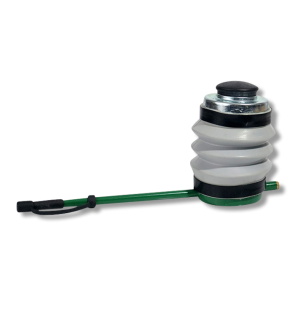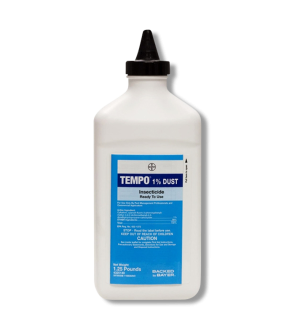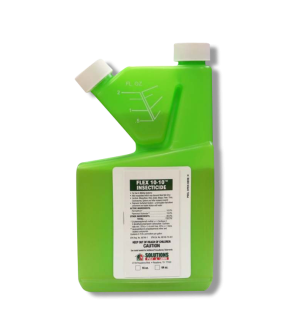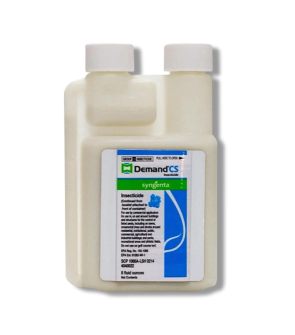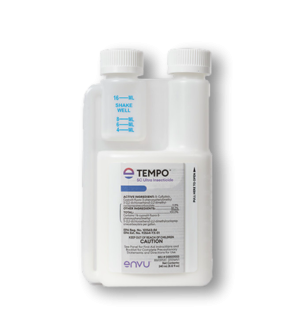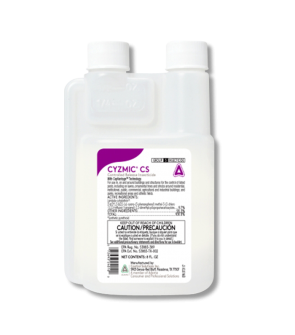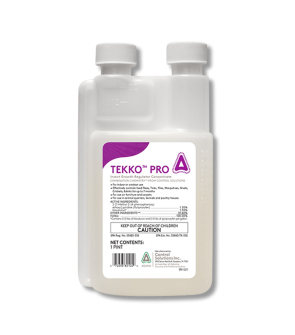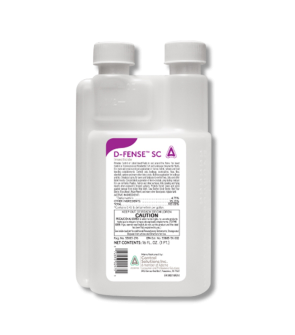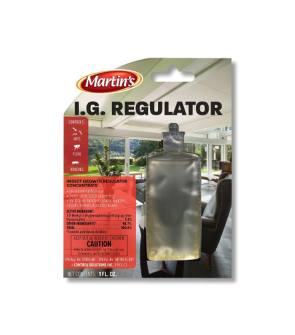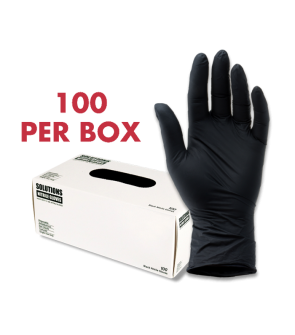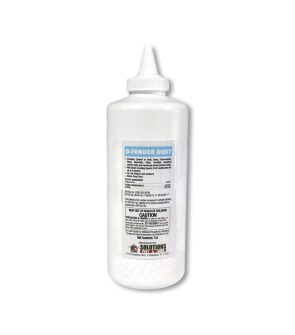Gain access to personalized product screening, the best pricing, rewards, and more!
Most Effective Products
Pantry Pests Control: How To Get Rid of Pantry Pests
This page is a general pantry pest control guide. Using the products and methods suggested, you can control any pantry pest species. The pantry pests category pages give additional information on the different species. Follow these guides and use the recommended products, and we guarantee 100% control of all pantry pest species.
Since over 80% of human food is made from grains such as rice, wheat, corn, and sorghum, it is no wonder most of us will have a pantry pest infestation at some point in our lives. Pantry pests like weevils, grain beetles, moths, and their larvae can be brought into the house or structure through usually infested products.
Pantry pest infestations occur in the packaging of food products. They enter packages in the grocery store, in storage warehouses, or during transportation. Sometimes, they invade homes when a window is left open.
Pantry pests do not transmit diseases or sting you; they contaminate food and make it unusable. They infest in large numbers and will reproduce inside your pasta, cereals, and rice, leaving larvae and eggs inside your food.
If you have encountered pantry pests in your home and are looking for a solution, the following DIY guide can help. Follow along to learn how to get rid of pantry pests using our expert advice and professional treatment products.
Identification

Before proceeding with a treatment program, you must be certain you are dealing with pantry pests and not some other issue. Misidentification can lead to a waste of time and money through erroneous and ineffective treatment methods. Various pantry pests species exist, and many insects (moths, beetles, weevils) are considered pantry pests. It is easier to identify pantry pests by the sites they are infesting.
- Indoors, the most common pantry pest is the Indian Meal Moth. Indian Meal Moths and Flour Moths are about 1/2 an inch long, and you can find them hovering over your kitchen and near your pantries. Grain beetles and rice weevils are smaller, about 2 to 3 mm long, and are usually brown to dark.
- If you notice the sudden appearance of moths, small beetles, and weevils in your kitchen and inside your pantries, they are most likely pantry pests.
If you can't determine the exact species of pantry pest you're dealing with, contact us, and we will help you identify the pest.
Inspection

After confirming that you are dealing with pantry pests, you can proceed with an inspection to determine where the infestation is located. During the inspection, you will be searching for pantry pest activity and their breeding grounds, which are the source of the infestation.
Where To Inspect
Indoors look for pantry pests where food goods are stored. This includes pantries, shelves, cabinets, drawers, and wherever food products are kept. You'll inspect every food package in your home. This includes flour, pasta, starches, cereals, spices, and every food package you own. Don't forget also to check pet food.
What to Look For
You're looking for pantry pest activity and signs of pantry pests, including eggs, larvae, skin shells, and the pantry pests themselves. The most obvious sign will be the insects, which will be crawling inside and outside the packages. You will have confirmed pantry pest activity if you find any pantry pests in your food products.
Treatment
Now that you have confirmed pantry pest activity, it's time to start treatment. Remember to read all the product labels, follow their application instructions, and stay safe by wearing personal protective equipment.
Step 1: Clear Out Your Pantry
Before applying the products, we must prepare our pantries and food storage spaces for treatment. To do this, you will need a vacuum and caulk. You will also get rid of all the infested food items (if one package is infested, there's a good chance they all are). This will ensure the complete elimination of their breeding grounds.
To start, throw away all the stored goods and will clear out the pantries. Then, vacuum inside the pantries, making sure to contact the corners. If your shelving is adjustable, clean the little pegs with a toothpick; these areas are notorious for collecting moth eggs and webs.
Next, use a cloth with soap and water on all the surfaces inside the pantries, cabinets, or areas where your food is stored. If you find any cracks or crevices, seal them with caulk.
Ensure all food goods are cleared off the cabinets, shelves, and pantries and thrown away, and the cabinets are empty before applying products. Once the pantry is emptied, you can begin chemical treatment.
Step 2: Apply Novacide Aerosol To Pantry
Now that the pantry shelves are cleared, you will begin by treating the back of the pantry where the shelves meet the walls. This will be where you have vacuumed, but sometimes a vacuum might not collect all of the webbing or eggs that hide deep within the cracks and crevices.
Applying an insecticide to the back of the shelves will treat any remaining pests harboring in the voids and any future pests that might make their way to these areas.
To control pantry pests, start with Novacide Flea & Tick Killer. Novacide is an aerosol insecticide labeled to control more than just fleas and ticks. It is also labeled to control common pantry pests like rice weevils, saw-toothed grain beetles, and moths, but it will also control many other pests in the home, such as ants, fleas, ticks, and cockroaches.
Novacide also has a long-lasting residual and a built-in insect growth regulator (IGR). This is critical because not only will Novacide kill any adult pests that come into contact with it, but it will also stop young insects from growing into adults, breaking the pest’s life cycle and stopping a re-infestation.
Shake the can well and hold it at a downward angle. You will spot-treat the back and sides of the shelving where there are cracks and crevices. Don't spray a continuous band along the shelving, but instead spot spray the shelving in quick bursts so a fine mist is applied. If you’ve applied to the point of runoff or see visible moisture, you over-applied.
Don’t re-enter or allow others to enter the treated area until it is dry and the vapors have dispersed. You can restock your pantry once the spray has dried.
Step 3: Apply Pro-Pest Pantry Moth Traps
Next, it is time to lure adult pantry pests out of hiding with glue traps. A pheromone-laced trap is a simple way to keep your newly restocked pantry safe from food-contaminating pests.
The Pro Pest Pantry Moth and Beetle Trap is a ready-to-use, pesticide-free trap that uses a pheromone-scented glue board to trap pantry pests. Remove the protecting paper from the pre-baited glue and fold the trap into a pyramid shape.
Place the trap on the pantry shelving where it won’t get smashed and will be left generally undisturbed. These traps can also be hung in pantries away from food for added convenience.
The trap’s pheromone bait will lure adult pantry pests to the trap, where they will get stuck in the glue. This is a great, low-effort tool that will last between 60 and 90 days. One trap will cover around 100 square feet.
Step 4: Contact Spray Application with Pyrid Aerosol
Having a contact insecticide on hand is important because it can kill any pantry pests that remain and stop them from establishing themselves in or around your new foods. Removing all of your food from the pantry before spraying any contact insecticides is very important. This will keep your food safe from possible contamination.
For stubborn pantry pests that slip by previous treatments, use Pyrid Aerosol. This aerosol insecticide is labeled for many pests and delivers a quick kill. Unlike Novacide, Pyrid Aerosol leaves no residual effect and is used as a knockdown spray instead. This can be applied directly or as a space spray to any pests in the pantry.
Pyrid Aerosol is safe to use in pantries holding packaged foods, but remember to remove any foods the spray could come into direct contact with. And don’t forget to cover up any utensils, dishes, or cooking equipment before spraying.
Don’t re-enter or allow others to enter the treated area until it is dry and the vapors have dispersed. When spraying any aerosol product, be mindful of any open flames or hot surfaces that might be nearby, as the propellants in the aerosols are flammable.
Prevention
After you have addressed the pantry pest infestation through treatment, you don't want your pantry reinfested. Here are some preventative measures you can take to ensure pantry pests don't make a return:
- When shopping at the grocery store, do not buy food in bulk amounts but rather enough food that you will use and consume quickly. This will make it so food doesn’t just stay sitting for a long duration in your pantry and make it susceptible to an infestation.
- Check products before you purchase them. Now, we are not saying open up a box of cereal you haven’t even bought yet since that would be wrong, but you can check for signs of possible infestation or contamination by checking if package seals have been broken or holes have been made.
- Store non-infested foods in tightly closed glass, ceramic, or hard plastic containers, especially for foods you know you will not eat quickly. Taking them out of their original packaging will prevent pantry pest infestations. You can also store susceptible foods in the refrigerator or freezer.
- Regularly clean your pantry, sweep up crumbs and spills as soon as they happen, and discard old food you no longer wish for. and remove old, unused food you don’t want anymore.
- Use pantry pest traps throughout the year to monitor potential pantry pest activity. The Pro-Pest Pantry traps will last for about 3 months.
Key Takeaways
What are Pantry Pests?
- Pantry pests is a catch-all term that describes numerous insects notorious for getting into contained dried foods and contaminating them with their feeding habits and unsanitary presence.
- There are a large number of different types of insects that qualify as pantry pests. These include rice weevils, granary weevils, grain moths, grain borers, drugstore beetles, tobacco beetles, Indian meal moths, confused flour beetles, red flour beetles, and many other species and variants.
How To Get Rid of Pantry Pests
- Address pantry pest infestations by first identifying the source of the infestation and discarding it. Once you have decluttered your pantry and removed unwanted foods and foods you feel are infested, it's time to clean your pantry thoroughly. Empty the shelves. Vacuum and clean the shelves and surfaces of the pantry.
- After cleanup, use a combination of Novacide Aerosol spray, Pyrid Aerosol, and Pro-Pest Pantry Moth Traps to kill any straggler pantry pests and ensure the entire surviving population is killed.
Preventing Pantry Pest Reinfestation
- Prevent future potential invasions of pantry pests by regularly cleaning the pantry of any spills and clutter.
- Dispose of old, unwanted food and keep dried foods you buy in hard plastic containers.
- When stocking your pantry, ensure you don't overstock with food and buy enough food for the short-term so there isn't so much clutter, which pantry pests love.






